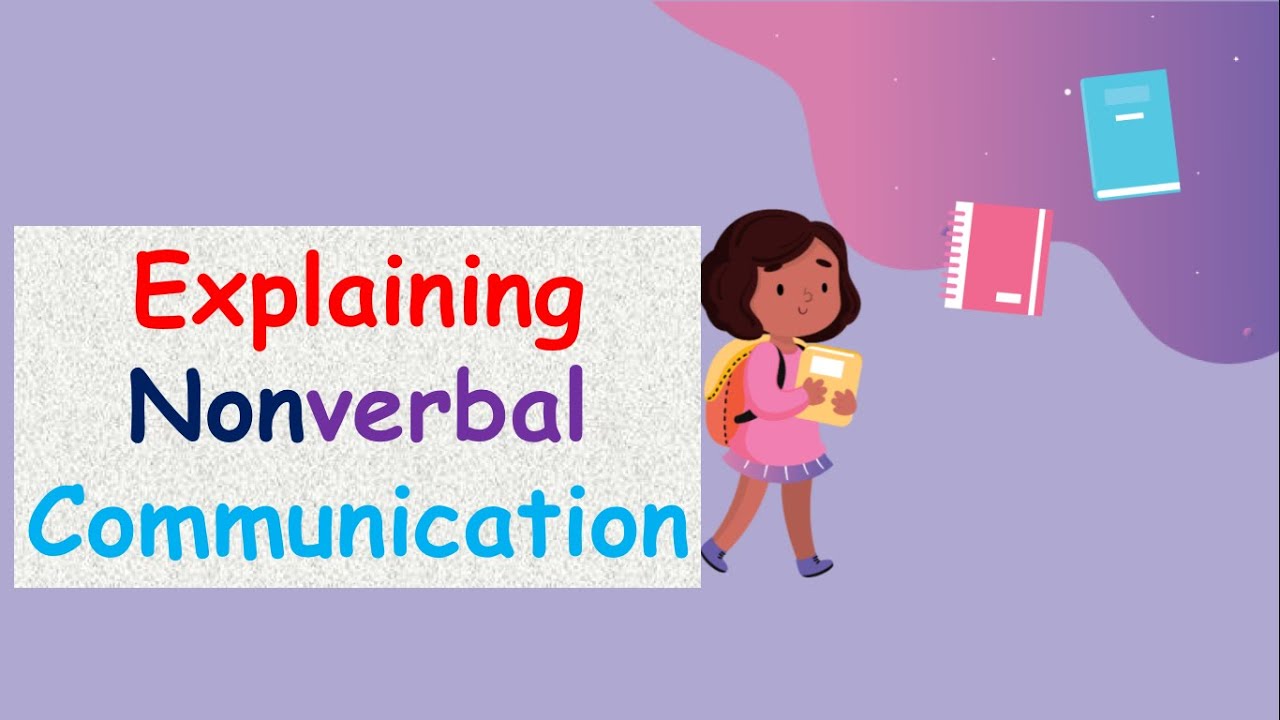What is Non-Verbal Communication?
Summary
TLDRThis video explores the importance of nonverbal communication, including facial expressions, gestures, and body language. It demonstrates how these elements can enhance or alter verbal messages and provides practical examples of using nonverbal cues to communicate effectively, such as with a new English learner or in a workplace scenario.
Takeaways
- 🗣️ Nonverbal communication is an essential part of communication that includes more than just words, encompassing actions, facial expressions, gestures, and body language.
- 😐 Facial expressions are a significant form of nonverbal communication that can reflect emotions and can either enhance or alter the meaning of spoken words.
- 🤔 Being aware of nonverbal cues is crucial for effective communication, as it helps in understanding and being understood by others.
- 👍 Gestures can act as a backup for verbal communication, especially in noisy environments or when clarity is needed.
- 🌐 Cultural awareness is important when using gestures, as their meanings can vary across different cultures.
- 🤽♂️ Body language communicates openness or closedness to communication through the entire body, not just facial expressions.
- 🤝 Positive body language, such as a handshake or making eye contact, can indicate a willingness to engage in conversation.
- 👋 Using nonverbal communication skills can be particularly helpful when speaking to someone who is learning a new language and may not understand all verbal cues.
- 🤷♂️ Mixed messages can occur when a person's words do not align with their body language, leading to confusion if only the words are considered.
- 🔍 Paying attention to both verbal and nonverbal cues is vital for accurate understanding and responding to others' messages.
- 🌟 Continuously improving nonverbal communication skills contributes to becoming a better communicator in various social and professional settings.
Q & A
What is nonverbal communication?
-Nonverbal communication is the exchange of messages without using words. It includes facial expressions, gestures, and body language, which can add to or even change the meaning of what is being said.
Why is it important to be aware of nonverbal communication?
-Being aware of nonverbal communication is crucial because it can significantly enhance understanding and prevent miscommunication. It helps you to interpret the true feelings and intentions behind spoken words.
What are the three major types of nonverbal communication mentioned in the script?
-The three major types of nonverbal communication mentioned are facial expressions, gestures, and body language.
How can facial expressions affect the way we communicate?
-Facial expressions can show others how we feel about something, and if they don't match what is being said, they can create confusion or misinterpretation of the message.
Why are gestures important in communication?
-Gestures are important as they can act as a backup for communication, especially when verbal communication is not effective, and they can convey common meanings or requests.
How do different cultures interpret gestures differently?
-Some gestures have different meanings in different cultures. It's important to be aware of these differences to avoid misunderstandings when communicating with people from diverse backgrounds.
What does body language communicate about a person's openness to communication?
-Body language, including posture and eye contact, can indicate whether a person is open or closed to communication. For example, crossed arms and lack of eye contact may suggest unwillingness to engage.
How did Dina use nonverbal communication to help Yuri understand her instructions?
-Dina used eye contact, gestures like holding up two fingers and pointing, and clear body language to indicate which boxes should be moved. She also used a smile and a thumbs up to show positivity after Yuri completed the task.
What was the mixed message scenario with Greg and Jalen?
-Jalen verbally agreed to cover Nancy's shift but his body language, such as crossing his arms and looking away, indicated reluctance. Greg recognized the mixed message and sought clarification, leading to a better understanding of Jalen's true intentions.
Why is it beneficial to use nonverbal communication as a backup mode?
-Using nonverbal communication as a backup mode can help clarify or reinforce the verbal message, especially when there are language barriers or when the verbal message is unclear or ambiguous.
How can understanding nonverbal communication help in becoming a better communicator?
-Understanding nonverbal communication allows for more accurate interpretation of others' messages and intentions. It also provides an additional means of expression, enhancing the effectiveness of one's own communication.
Outlines

This section is available to paid users only. Please upgrade to access this part.
Upgrade NowMindmap

This section is available to paid users only. Please upgrade to access this part.
Upgrade NowKeywords

This section is available to paid users only. Please upgrade to access this part.
Upgrade NowHighlights

This section is available to paid users only. Please upgrade to access this part.
Upgrade NowTranscripts

This section is available to paid users only. Please upgrade to access this part.
Upgrade NowBrowse More Related Video

Pengantar Ilmu Komunikasi - Komunikasi Non Verbal

PESAN NONVERBAL - PENGANTAR ILMU KOMUNIKASI

Qué es el lenguaje corporal y para qué sirve | Crecimiento personal

Former FBI Agent Explains How to Read Body Language | Tradecraft | WIRED

7 body language tips to impress at your next job interview

Explaining Nonverbal Communication
5.0 / 5 (0 votes)